(Translated from the original post on December 5, 2023)
Hello, this is Minew, an insect lover.
I have introduced spiders (link to Japanese BLOG), moths (link to Japanese BLOG), fashionable insects (link to Japanese BLOG), and other small creatures through macro photography, and this time I would like to invite you to an even deeper level of geekiness (lol) - "caterpillars". Sorry if this isn't your cup of tea!
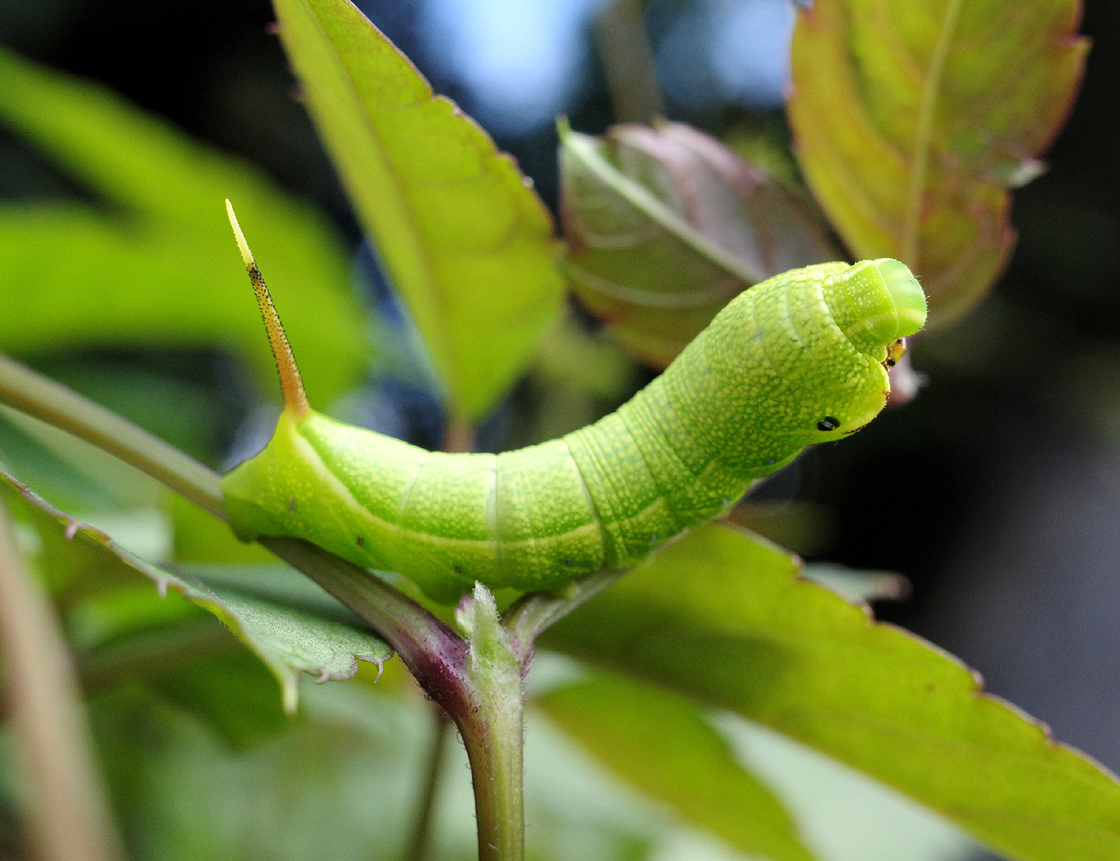
GR III, P mode, ISO800, 1/400sec, F5.0, -0.3EV, WB:Auto, Crop 35mm, Retouched (Crop, Level compensation)
A larva of a hawk moth or hummingbird moth, or Sphingidae.
The protrusion from the abdomen extends like an antenna. Cool, isn't it? Is it for picking up radio waves? No, no, it is a mystery what it is for, but the tail (or more precisely the tail horn) is a feature common to all larvae of the Hawkmothidae family and can be a marker for distinguishing them. Tail horns come in a variety of colors and shapes.
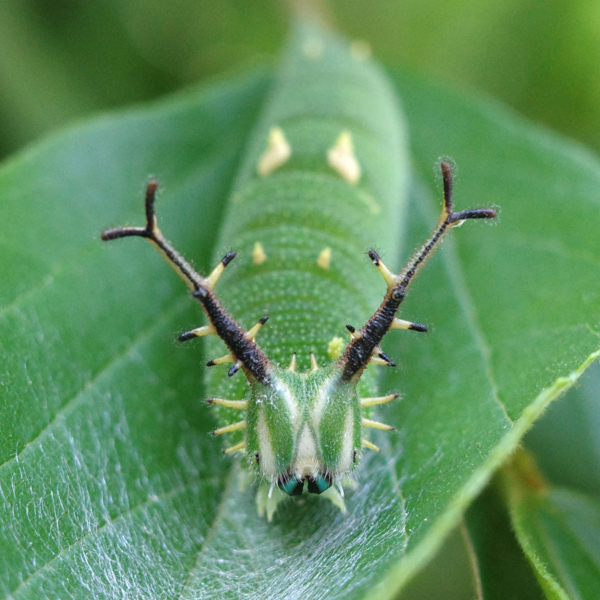
GR IIIx, P mode, ISO800, 1/200sec, F3.5, 0.0EV, WB:Auto, Crop 71mm, Retouched (Crop, Level compensation)
A larva of the Red Ringtail or Hestina assimilis.
It has branched, fine antlers on its head, like those of a deer. If you look closely, you can also see a bright light blue color on its mouth. Monstrous or cute? It is said to be an invasive species that has invaded the Kanto region from the south in recent years.
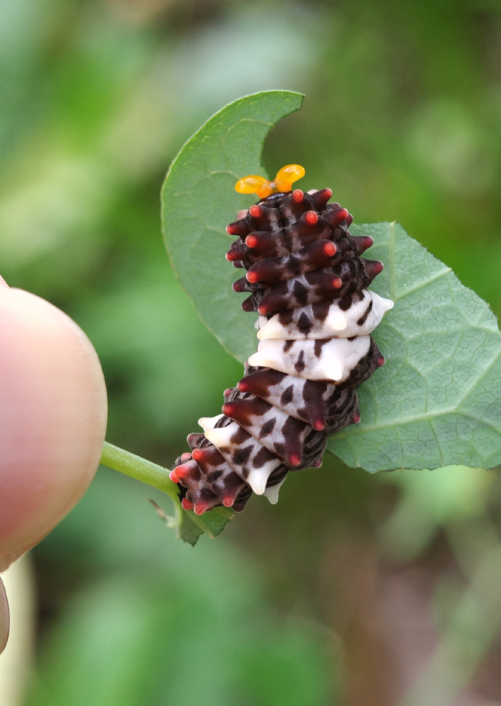
GR IIIx, P mode, ISO100, 1/50sec, F4.5, -0.7EV, WB: Auto, Crop 71mm, Retouched (Crop, Level compensation)
A larva of the Musk Swallowtail or Atrophaneura alcinous, which I featured in my previous article.
The pop colors - black, white, red and orange - make it look like candy. The top is the head, and the orange projections are called "nikukaku" ("flesh horns") in Japanese. The larvae of swallowtail butterflies commonly have them, and they pop out when they receive a stimulus. I picked up the leaf to take a picture, and it got mad at me. Sorry, sorry.
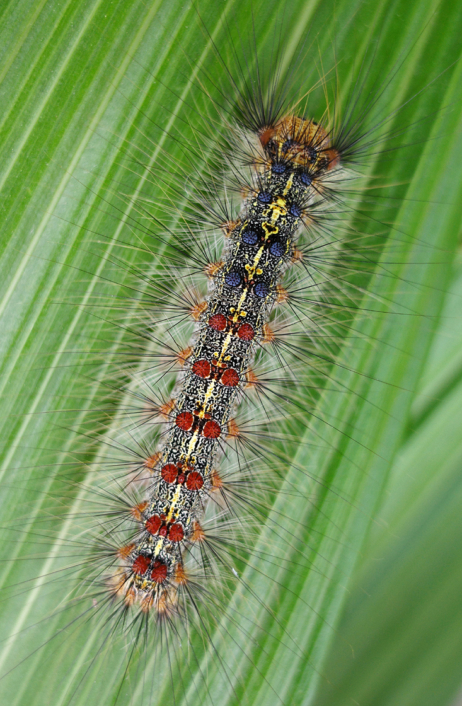
GR III, P mode, ISO400, 1/100sec, F2.8, +0.3EV, WB: Auto, Vivid, Crop 35mm, Retouched (Crop, Level compensation)
A larva of the gypsy moth or Lymantria dispar.
It is a hairy caterpillar. They suddenly grow in large numbers and are disliked. Even someone like me is physiologically reluctant to approach them (they are not poisonous). But look at the vibrant colors and patterns. The neatly arranged blue and reddish-brown circle patterns and the vertical yellow lines are mysterious formations created by nature. Because I wanted to show you the colors, I took this photo with "Vivid" image control.
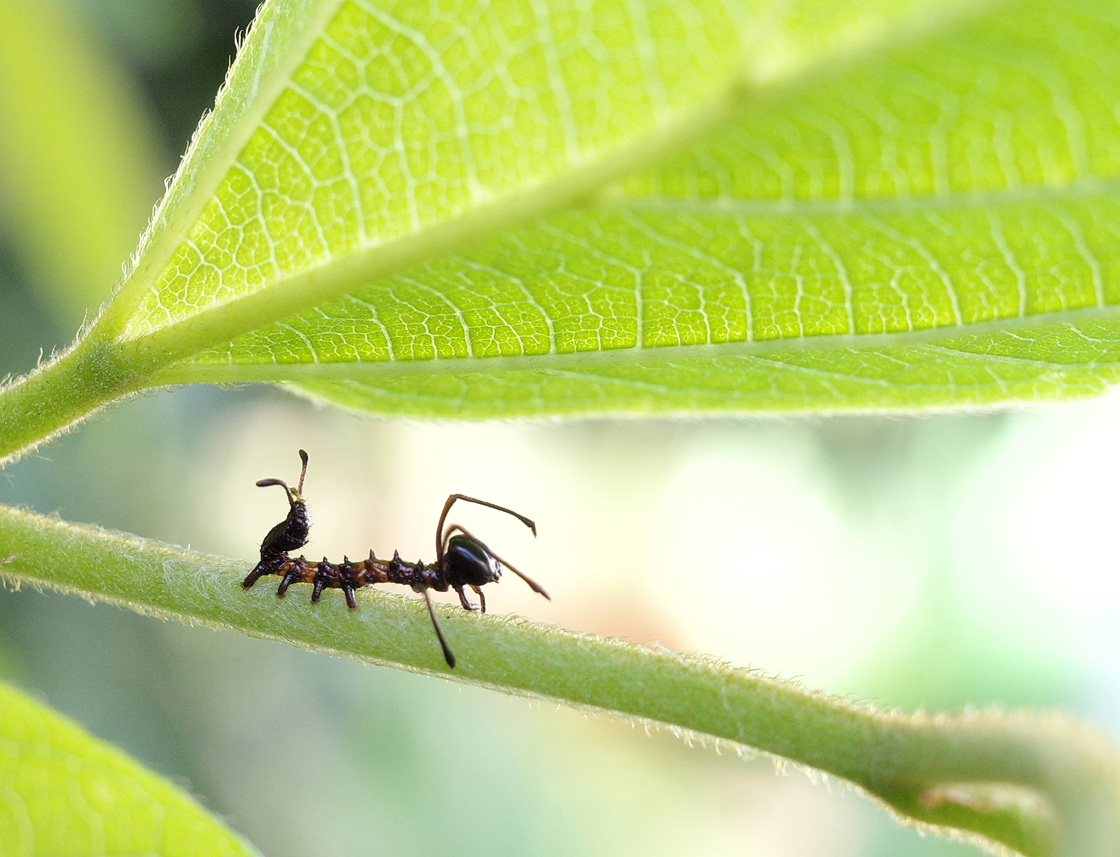
GR III, P mode, ISO400, 1/80sec, F4.5, +1.7EV, WB: Auto, Crop 50mm, Retouched (Crop, Level compensation)
A young larva of a Lobster Moth or Notodontid.
It has a shiny black head and body, spikes on its back, and four long arms (thoracic legs)! I thought it must be an "alien" invader from outer space. But when I looked it up, it turned out to be a caterpillar. Crisis on Earth averted! (LOL)
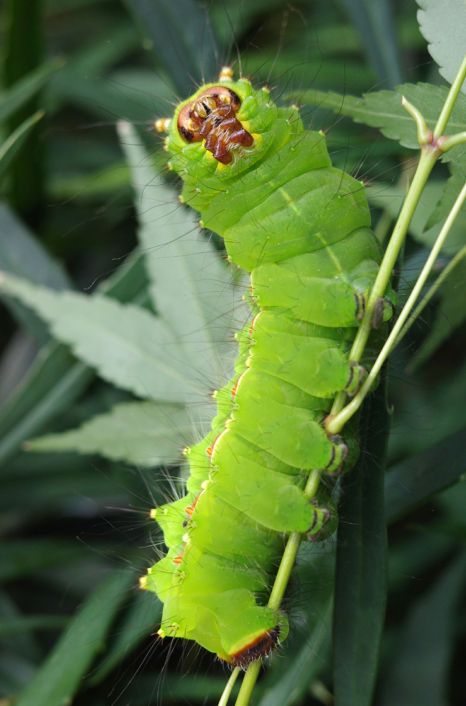
GR IIIx, P mode, ISO400, 1/400sec, F5.0, -0.3EV, WB: Auto, Crop 50mm, Retouched (Crop, Level compensation)
The last one is a larva of an emperor moth, or Actias aliena. It is about the size of a little finger.
Its pose, with both hands clasped together as if in prayer, seems to convey some kind of message. The bright green body color appears to be fluorescent. It is difficult to spot because it blends in well with young maple leaves, and I was surprised to find it on a garden tree at home. Not only are the larvae beautiful, but the large adult moths are also beautiful with light blue wings.
* * * * * *
As you can see, there are many different forms of caterpillars. Mother Nature gives birth to diverse life forms and it is fun to discover them in your immediate surroundings. The GR captures them well, thanks to its macro function!
I hope you all enjoy macro photography as much as I do. See you soon!
(Minew)














